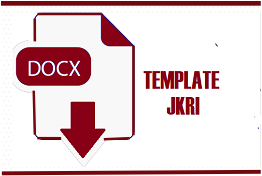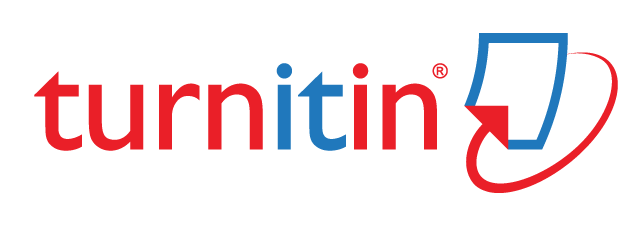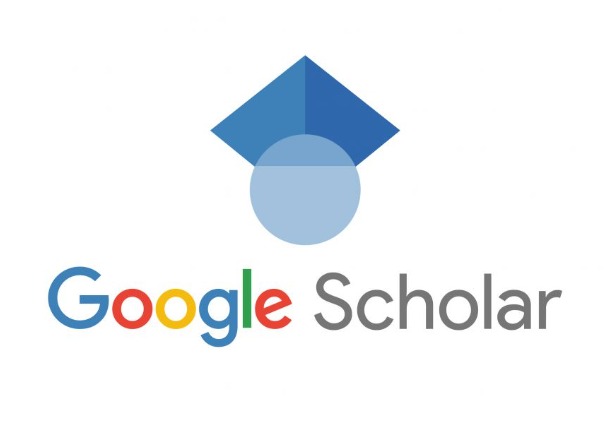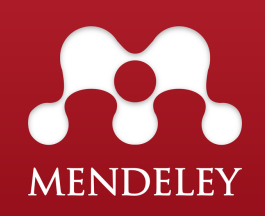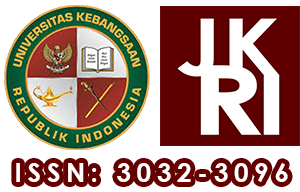Author Guideliness
Directrices para autores
Articles submitted to the National Journal of the Republic of Indonesia must contain manuscripts themed around nationalism. The theme of nationalism can include values of nationalism, resilience, defense and security, as well as matters related to efforts to strengthen and cultivate the spirit of nationalism.
The script is written using a template that can be downloaded from the homepage.
The Title Must Reflect the Content of the Manuscript, Written in Capital Letters, No More Than 14 Words (Georgia 14)
First Author1, Second Author2, etc. (Georgia 10, No Title, Not Abbreviated)
Author's Institution Name (Georgia 10)
E-mail: Author1@institution, Author2@institution
Abstract: The abstract is written in English and contains the introduction, research objectives, research methods/approaches, and research results. The abstract is written in one paragraph, no more than 250 words. (Georgia 10, single spacing).
Keyword: Keyword 1, Keyword 2, Keyword 3 (Max 5 Words, Georgia 10, single spacing)
Abstract: The abstract is written in Indonesian and contains the Introduction, research objectives, research methods/approaches, and research results. The abstract is written in one paragraph, no more than 200 words. (Georgia 10, single spacing).
Keywords: Keyword 1, Keyword 2, Keyword 3 (Max 5 Words, Georgia 10, single space)
INTRODUCTION
The introduction includes the background or issues that are the problems as well as the focus of the research that will be described, containing the urgency and rationalization of the research. The objectives and the plan for solving the problem are explained more clearly in this section. [GEORGIA, 11, normal, single spacing].
LITERATURE REVIEW
The Literature Review section explains the relevant theoretical foundations and the development of hypotheses (if any) included in this section. [GEORGIA, 11, normal, single spacing].
RESEARCH METHODOLOGY
The research method explains the activity design, scope or object, main materials and tools, location, data collection techniques, operational definitions of research variables, and the analysis techniques used. [GEORGIA, 11, normal, single spacing].
RESEARCH RESULTS AND DISCUSSION
This section presents the research results related to the objectives. The research results can be supplemented with tables, graphs (images), and/or charts. The discussion section presents the results of data processing, logically interprets the findings, and relates them to relevant reference sources, both those consistent with the results and those that contradict them. The possibility of follow-up activities can also be presented in this section [GEORGIA, 11, normal, single spacing].
Table 1. Table Name (GEORGIA, 10)
95%CI
Condición
M(SD)
Context: LL
Text to translate: LL
UL
Cartas
14.5(28.6)
5.4
23.6
Dígitos
31.8(33.2)
21.2
42.4
Image 1. Image name (GEORGIA, 9)
CONCLUSION
The conclusion contains a brief summary of the research results and discussion. Suggestions can be conveyed in this section [GEORGIA, 11, normal, single spacing].
Expression of Gratitude
The expression of gratitude contains thanks to those who provided support in the implementation of the research.
BIBLIOGRAPHY
The writing of the bibliography is only those cited in this manuscript and arranged alphabetically and chronologically using Reference Manager. (According to the referenced subtext, using APA citation style) [GEORGIA, 11, normal, single spacing].
Book
Woolfolk, A. (2004). Psicología Educativa (9ª ed.). Boston: Allyn and Bacon.
Hamza B, U. (2012). Learning Model Creating a Creative and Effective Teaching and Learning Process. Jakarta: PT. Bumi Aksara.
Book of Collected Articles
Nucci, L. P., Krettenauer, T., & Narváez, D. (Eds.). (2008). Manual de moral y carácter
educación. Routledge.
Article in the Anthology Book
Erstad, O. (2011). Ciudadanos navegando en mundos literarios: El caso de la alfabetización digital. En M. Thomas
(Ed.), Deconstructing digital natives: young people, technology, and the new literacies (pp.
99-118). Nueva York: Routledge.
Colby, A. (2015). Building the Moral and Civic Development of Students. In L. P. Nucci, & D. Narvaez, Handbook of Moral and Character Education (pp. 567-595). Bandung: Nusa Media.
Article in a Journal/Magazine
Choy, S. C., & Oo, P. S. (2012). Reflexión y Prácticas Docentes: ¿Un Precursor para Incorporar el Pensamiento Crítico en el Aula? Revista Internacional de Instrucción, 5(1), 167-182.
Abdillah, Fauzi. (2017). Revitalization of Reflection Skills in Prospective Teacher Students Through Writing PPKN Lecture Journals. Eduhumaniora: Journal of Basic Education, 9(1). 8-16.
Koltay, T. (2011). Los medios y las alfabetizaciones: alfabetización mediática, alfabetización informacional, alfabetización digital. Medios, Cultura y Sociedad, 33(2), 211-221. doi:10.1177/0163443710393382
Official Document
UNESCO. (2014). Educación para la Ciudadanía Global: Preparando a los Estudiantes para los Desafíos del Siglo XXI. París: UNESCO.
Law of the Republic of Indonesia Number 2 on the National Education System. 2003. Surabaya: Usaha Nasional
Language Development and Training Center. (1978). Guidelines for Writing Research Reports. Jakarta: Depdikbud.
Skrips

